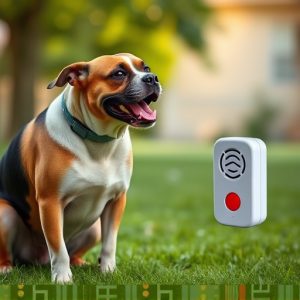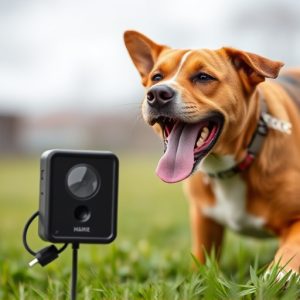Sonic Dog Deterrents: Protecting Walks with Effective Range
Sonic dog deterrents protect walkers from aggressive canines using high-frequency sound waves (3-12…….
Sonic dog deterrents protect walkers from aggressive canines using high-frequency sound waves (3-12 kHz) without causing harm, ideal for urban areas with high dog populations. Choose a device with a 100-500 feet sonic deterrent range, targeted canine sounds, adjustable sensitivity, and weather resistance. Optimize success by strategically placing devices along fences or in problem areas, maintaining proper spacing, and training your dog to associate the sonic signal with a command or negative experience.
Discover the power of sonic dog deterrents – innovative walking protection tools designed to keep your trails peaceful. This comprehensive guide explores how these devices utilize sound waves to deter dogs, offering a humane alternative to traditional methods. We’ll delve into their benefits, from noise-free walks to effective training assistance. Learn to choose the ideal sonic deterrent, considering factors like frequency and range, to ensure maximum protection for an enjoyable outdoor experience.
- Understanding Sonic Dog Deterrents: How They Work and Their Benefits
- Choosing the Right Sonic Deterrent: Factors to Consider for Effective Dog Protection
- Implementing and Training: Tips for Maximizing the Sonic Deterrent Range for Dogs
Understanding Sonic Dog Deterrents: How They Work and Their Benefits
Sonic dog deterrents are innovative devices designed to protect walkers from aggressive canine interactions using sound waves. They emit high-frequency sounds that are generally unpleasant for dogs, encouraging them to avoid certain areas. These deterrents operate within a specific sonic deterrent range for dogs, typically between 3 and 12 kHz, which is beyond the human hearing range but can be heard by canines. This technology offers several benefits for dog owners and walkers, especially in urban settings where dog populations are high.
One of the key advantages is their non-lethal and humane nature. Unlike traditional chemical or shock collars, sonic deterrents do not cause physical harm to dogs. They simply use sound to communicate a negative experience, teaching dogs to stay away from certain places. This can be particularly useful in areas where stray dog populations are managed, helping to keep walkers safe without resorting to more aggressive methods. Additionally, these devices can offer a hands-free solution for dog control, allowing individuals to enjoy their outdoor activities with peace of mind.
Choosing the Right Sonic Deterrent: Factors to Consider for Effective Dog Protection
When selecting a sonic dog deterrent, several key factors come into play to ensure effective protection. One of the primary considerations is the sonic deterrent range for dogs. This refers to the distance at which the device can emit sounds that are unpleasant or irritating to canines. Different models offer varying ranges, typically ranging from 100 to 500 feet. Opting for a device with an appropriate range ensures your yard or walking path is effectively covered, deterring dogs from entering.
Additionally, it’s essential to choose a deterrent that produces sounds at frequencies specifically targeted towards dogs. Canines have a more acute hearing than humans, so devices designed for them emit sounds in the higher-frequency range. This helps to avoid any discomfort or harm to humans while ensuring its effectiveness on dogs. Other features like adjustable sensitivity settings and weather resistance are also beneficial, allowing you to tailor the device’s performance to your specific needs and environmental conditions.
Implementing and Training: Tips for Maximizing the Sonic Deterrent Range for Dogs
Implementing and training are key steps to maximize the effectiveness of a sonic deterrent for dogs. First, strategically place the devices along perimeter fences or in problem areas where dogs tend to trespass. Ensure proper placement by considering factors like terrain and potential obstructions that could interfere with the sound’s projection. Each device has a specific range; therefore, spacing them appropriately is vital to create a continuous protective barrier.
Training involves teaching your dog to associate the sonic signal with a command or negative experience. Consistency is crucial here. When the device activates due to a stray dog, immediately issue a command like “Go back” and reward your dog with treats when it retreats. Repeat this process until your dog instinctively responds to the sound, effectively extending the deterrent’s range through behavioral modification.
Sonic dog deterrents offer a humane and effective solution for managing canine behavior, especially in public spaces. By understanding their mechanics and benefits, choosing the right device based on specific needs, and implementing proper training techniques, pet owners can ensure these tools enhance their dogs’ walking protection without causing harm. Maximizing the sonic deterrent range for dogs allows for broader coverage, making walks more enjoyable and safer for both pets and their owners.


